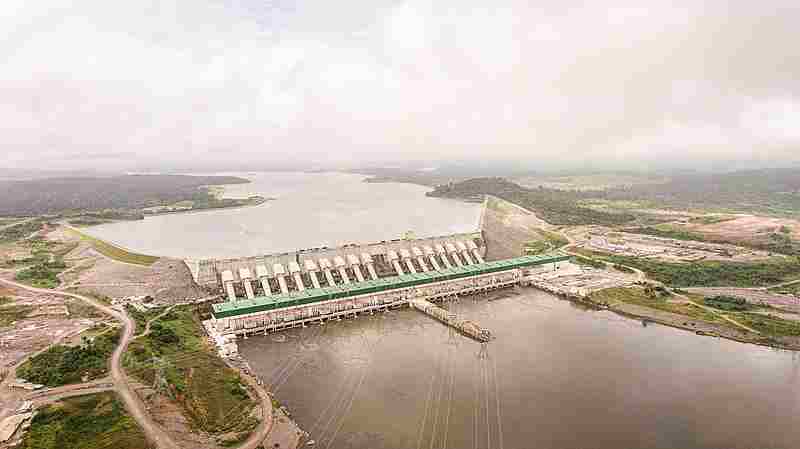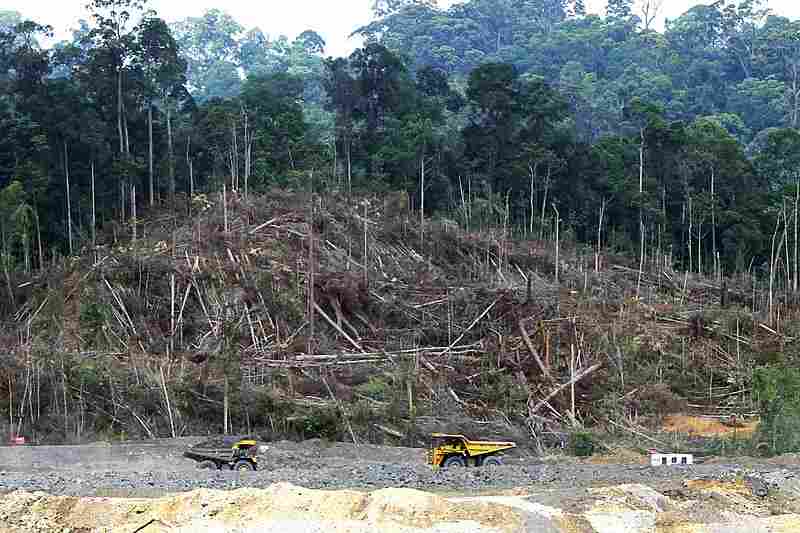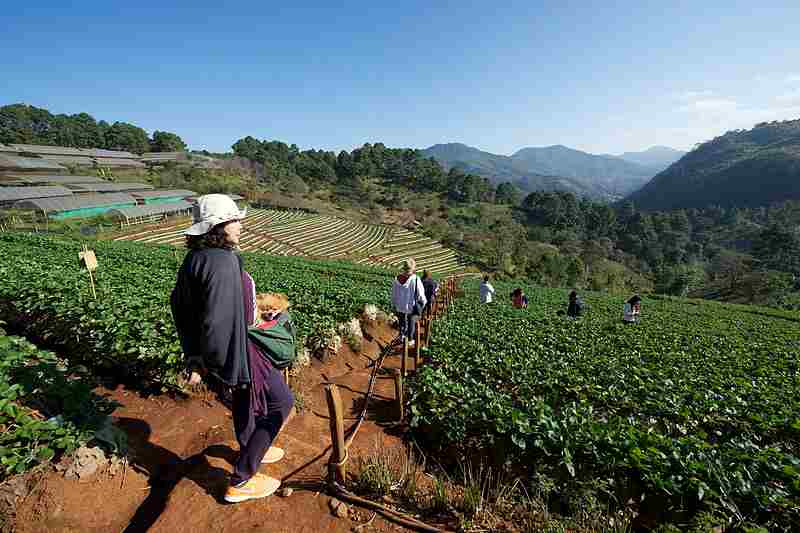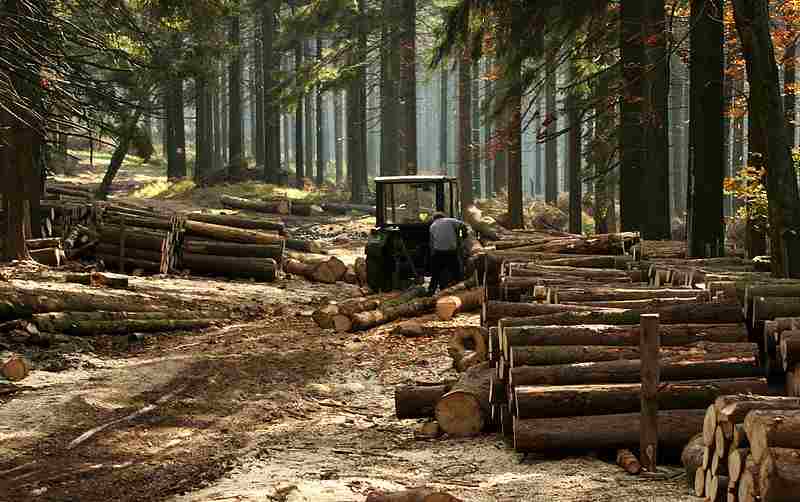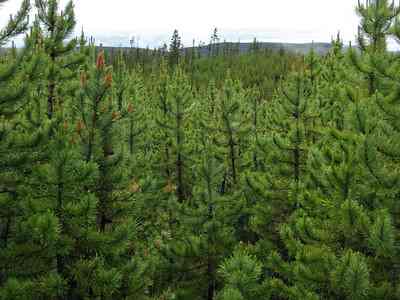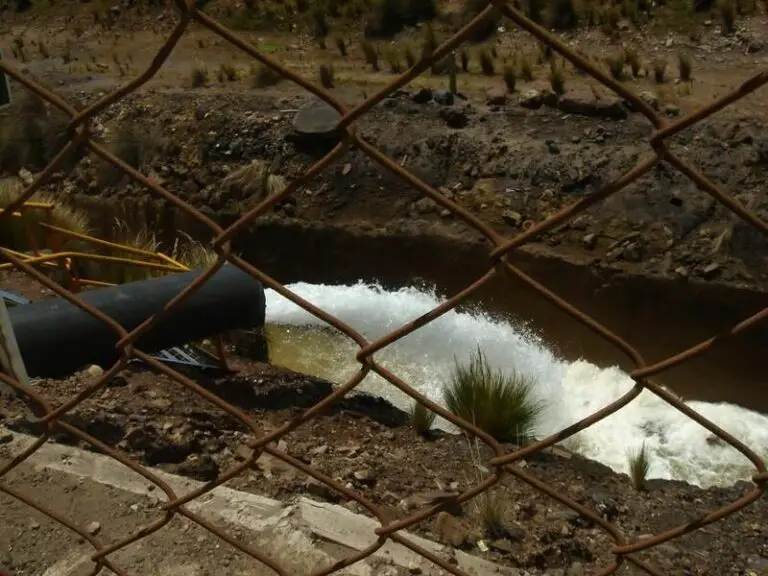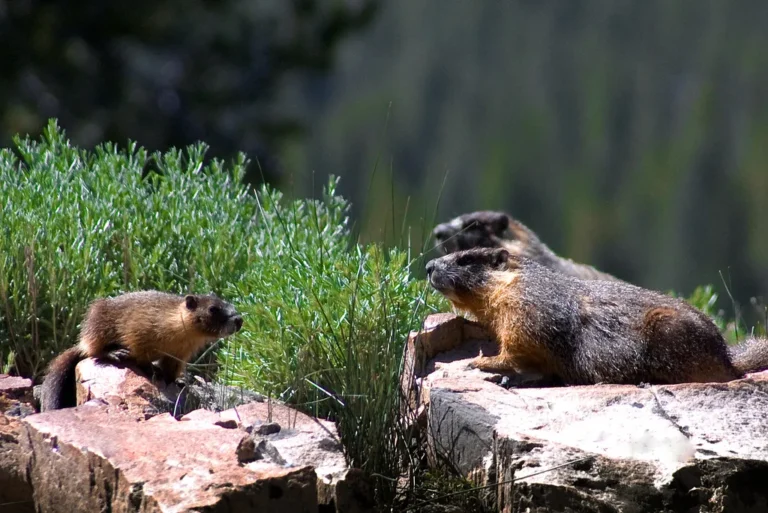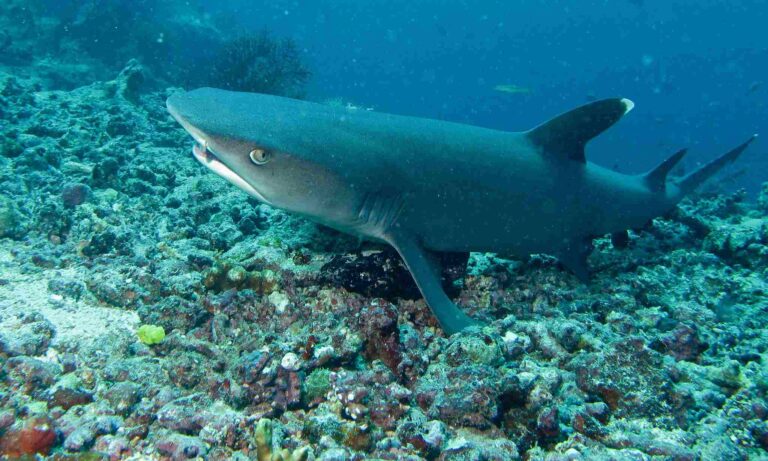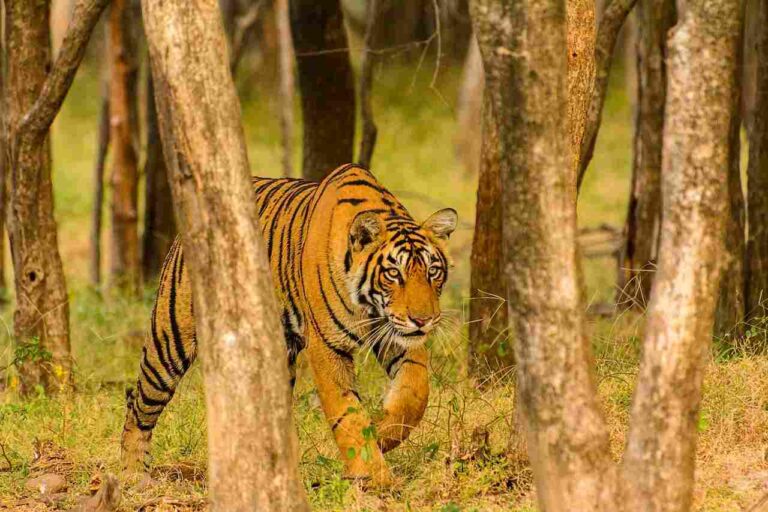Why is the Amazon Rainforest in Danger? 9 Reasons Discussed
The Amazon Rainforest is in danger due to regional agricultural expansion, exploitation of timber resources, rapid urbanization, electricity generation-related environmental impacts, regional climate change, mining and exploration, poaching of native species, human-induced forest fires, habitat fragmentation and biodiversity displacement. This article answers the question; Why is the Amazon Rainforest in Danger?, as follows;
1). Regional Agricultural Expansion
Regional agricultural expansion is one of the reasons why the Amazon Rainforest is in danger. This section sheds light on the degrading influence of agriculture, within this forested ecosystem.
Causes and Related Factors of Regional Agricultural Expansion in the Amazon
The concept of agricultural expansion in the Amazon is linked to factors like land conversion, cattle ranching, soybean cultivation, infrastructure development, and land grabbing. It must be noted that some of these factors are linked to other causes of endangerment in the Amazon, and will therefore be mentioned repeatedly in this article.
One of the primary causes of regional agricultural expansion in the Amazon is the conversion of forested areas into agricultural land. Farmers, who are driven by economic incentives and government policies, clear large tracts of rainforest for crops and pasture.
Beef production, with particular reference to cattle ranching, is a major driver of deforestation in the Amazon. The demand for beef both domestically and internationally, has led to the clearing of forests for pasture land.

Soybeans are another significant contributor to deforestation. The expansion of soybean cultivation for animal feed and vegetable oil production, among other purposes, has resulted in the felling of vast forest areas.
Road construction and other infrastructure projects, often promoted by governments to stimulate economic growth, can open up previously inaccessible segments of the Amazon for agricultural expansion.
Lastly, land grabbing by individuals, corporations, and agribusinesses is a fairly common practice in the area. Large-scale land acquisitions displace indigenous communities and smallholders, and facilitate forest clearance.
Threats Posed by Regional Agricultural Expansion in the Amazon
Threats which agricultural expansion pose to the Amazon Rainforest can be outlined to include; deforestation, biodiversity loss, greenhouse emissions, water resource wastage, displacement of indigenous populations, negative feedback loops, and economic unsustainability.
Agricultural expansion results in deforestation, which directly threatens the Amazon rainforest. The loss of trees due to human activities, disrupts the delicate ecological balance, affecting biodiversity and contributing to climate change.
The Amazon is one of the most biodiverse regions on Earth. As forested segments are cleared, numerous plant and animal species lose their habitats and face the risk of extinction.
Deforestation releases vast amounts of stored carbon dioxide into the atmosphere, contributing to global warming and climate change. The Amazon is very critical, globally, in absorbing and storing carbon, and its destruction intensifies the greenhouse effect.
The Amazon rainforest is also instrumental in regulating regional and global water cycles. Deforestation disrupts this function, and leads to altered rainfall patterns, more frequent droughts, and changes in river flow patterns.
Indigenous peoples and local communities that depend on the forest for their livelihoods are often displaced and marginalized as a result of regional degradation and encroachment. Their traditional knowledge and sustainable land management practices are also lost.
As deforestation progresses, it can establish a feedback loop known as "dieback." This occurs when reduced rainfall and increased temperatures in deforested areas make it difficult for the forest vegetation to regenerate, leading to more fires and further forest degradation.
Lastly, while regional agricultural expansion is capable of providing short-term economic benefits, it often leads to long-term unsustainability. Soil degradation, loss of ecosystem services, and increased susceptibility to climate change can all harm the agricultural sector itself.
2). Exploitation of Timber Resources
Some factors that cause excessive exploitation of timber resourced in the Amazon include; high demand for wood products, economic incentives, weak regulations and enforcement, infrastructure development, and global market pressure.
The global demand for timber and wood products drives the exploitation of timber resources in the Amazon. Timber is utilized for construction, furniture, paper production, and various other purposes in multiple industries.
Timber extraction is often a lucrative venture, which offers economic opportunities to loggers and the governments of Amazonian countries. Revenue from timber sales can be substantial, thereby creating incentives for logging activities.
Inadequate or poorly enforced forestry regulations in some Amazonian countries make it easier for illegal logging operations to flourish. Corruption and lax oversight contribute to the problem.
The construction of roads and infrastructure projects, often promoted for economic development, provides easier access to remote forest areas. This increased access facilitates the transportation of timber and increases logging activities.
International markets, driven by consumer demand for wood products, indirectly encourage timber extraction. The Amazon supplies timber to the global market, making it susceptible to external pressures for increased yield. In a linear economic context with no recycling (in this case through reforestation), such pressure will invariably culminate in resource depletion and collapse of the forest ecosystem.
Threats Posed by Timber Resource Exploitation to the Amazon Rainforest
Timber resource exploitation is associated with imminent economic and environmental issues like deforestation, biodiversity loss, carbon emissions, soil degradation, water pollution, loss of indigenous livelihoods and ecosystem services.
Logging activities directly result in deforestation, as trees are cut down and removed from the forest. This contributes to the loss of forest cover in the Amazon.
As stated earlier, the Amazon rainforest is a biodiversity hotspot, hosting a vast array of plant and animal species. Logging disrupts this ecosystem, and leads to habitat destruction, while threatening many species with extermination.
Deforestation for timber contributes to carbon emissions, as trees act as carbon sinks that store significant amounts of carbon in their biomass. When these trees are removed and burned (as biofuel) or allowed to undergo biodegradation, the stored carbon is released into the atmosphere, thereby exacerbating climate change.
Logging operations can damage the forest floor, increasing both the risk and rate of soil erosion and degradation. This affects the nutrient cycles; and can have long-term negative impacts on the soil fertility and productivity of the region.
Timber extraction can lead to increased sedimentation in aquatic ecosystems within the Amazon like rivers and streams, thereby affecting water quality and availability. This can affect both local communities and the broader environment.
The extraction of timber often occurs in or near indigenous territories, and may threaten the livelihoods and rights of indigenous communities that depend on the forest for their sustenance and cultural practices.
In similar manner to other forms of deforestation, the removal of trees for timber can create a feedback loop where forest degradation leads to more fires, further deforestation, and changes in regional climate patterns.
The Amazon provides vital ecosystem services, including climate regulation, rainfall generation, and air and water purification. Timber exploitation undermines these services by depleting forest resources, in such a manner that impacts not only the Amazon but also the global climate.
3). Rapid Urbanization
In the Amazon Rainforest, rapid urbanization is a cause of degradation and can be linked to factors like population growth, economic development, infrastructure installation, and land value speculation, among others.
The Amazon region has experienced significant population growth in recent decades. As people move to urban areas in search of better economic opportunities, these urban centers expand rapidly and encroach into neighboring forested zones.
Urban areas in the Amazon often serve as hubs for economic activities, including agriculture, mining, and manufacturing. This leads to increased urbanization and population influx, as established industries attract a workforce.
Government investments in infrastructure, such as roads, highways, and ports, facilitate urbanization by improving the connectivity between cities and remote areas, making urban centers more accessible. Such connection pathways often encroach on forest land.
Speculation on land value and the potential for development drives urban expansion. Investors purchase land in anticipation of its future value, often resulting in land conversion.
Deforestation for both timber harvesting and agriculture can lead to increased urbanization as cleared land becomes available for development. This interconnected relationship accelerates both processes.
Threats Posed by Rapid Urbanization in the Amazon
Rapid urbanization poses multiple threats to the Amazon Rainforest including deforestation, biodiversity loss, climate change, water pollution, land degradation, flooding and erosion, resource depletion, and social impacts like cultural disruption.
As urban areas expand, forests are cleared to accommodate housing, infrastructure, and commercial development. This directly contributes to deforestation and habitat loss.
Urbanization in the Amazon, which is known for its species richness; disrupts ecological balance, leading to habitat destruction and the potential extinction of many species.
Deforestation associated with urbanization releases stored carbon into the atmosphere, contributing to climate change. Moreover, urban areas tend to generate heat islands that alter local climate patterns.
Urbanization can lead to increased rate and severity of water pollution as sewage and industrial runoff find their way into rivers and streams. This can harm aquatic organisms in water bodies, and affect water quality for human consumption.
Intensive urban development can lead to soil compaction and degradation, reducing the fertility of regional soils, and affecting agricultural productivity in the environs.
Also, urban expansion often results in the removal of natural vegetation that helps regulate water flow and prevent soil erosion. This can lead to increased regional flooding, which can impact both urban and rural communities.
Rapid urbanization tends to further stimulate resource extraction activities, such as mining and logging, further contributing to environmental degradation.
The influx of people into urban areas can lead to various socioeconomic challenges, including inadequate housing, healthcare, and education. It can also strain local resources and services. For rural areas, rapid urbanization can disrupt traditional indigenous and local cultures as communities are uprooted from their ancestral lands and exposed to urban lifestyles.
Combined effects of urbanization, deforestation, and climate change can establish unfavorable feedback loops where each factor exacerbates the others, leading to more severe environmental and social consequences.
4). Electricity Generation-Related Environmental Impacts
Environmental impacts linked to electricity generation are another reason why the Amazon Rainforest is in danger. These impacts can be discussed in terms of factors like hydroelectricity, fossil fuel power plants, transmission lines, and illegal resource extraction.
Hydroelectric power projects have been a major aspect of electricity generation in the Amazon. Large water dams, such as the Belo Monte Dam, have been constructed to harness the energy potential of Amazonian rivers. These structures are known to disrupt natural hydrological patterns, and they affect the forest structure as well as its native species during their construction and maintenance.

Some regions within the Amazon rely on fossil fuel power plants, mainly fueled by natural gas or diesel, to meet their electricity needs. These power plants emit greenhouse gases and various air pollutants.
The expansion of electricity infrastructure, including the construction of transmission lines, is necessary to distribute power generated within and outside the Amazon. Installing these transmission lines often requires deforestation and infrastructure development.
In remote of the Amazon, illegal gold mining operations are carried out, which rely on the use of gasoline and diesel generators to power their equipment. These activities are often associated with deforestation, largescale environmental pollution, and habitat destruction.
An Outline of Threats Posed by Electricity Generation to the Amazon Region
Threats posed by human activities associated with the generation of electricity, to the Amazon region include; deforestation, alteration of water systems, biodiversity loss, climate change, water and air pollution, indigenous land displacement.
Hydroelectric dam projects often require the clearing of large forested areas to create reservoirs. In addition, transmission line corridors (linked to the hydropower systems) may necessitate further deforestation. These actions result in habitat loss and fragmentation.
The construction of dams can alter river ecosystems and natural water flow patterns. Reservoirs can flood large areas of the forest, leading to the drowning of ground-dwelling species, and the release of greenhouse gases, such as methane, from submerged vegetation.
The combined effects of disruption of natural river systems, and deforestation associated with hydroelectric projects, can lead to the displacement and/or eventual extinction of species that are adapted to the region's unique aquatic and terrestrial ecosystems.
Hydroelectric reservoirs can release methane, a potent greenhouse gas, which contributes to climate change. In addition, fossil fuel power plants emit significant amounts of carbon dioxide and other pollutants.
Fossil fuel power plants release pollutants into the air, including nitrogen oxides and sulfur dioxide, which can facilitate the formation of acid rain and affect local air quality. Water discharges from power plants may also contain pollutants that can infiltrate and harm aquatic ecosystems.
The construction of hydroelectric dams can result in the displacement of indigenous communities and the loss of their traditional lands, impacting their way of life and cultural heritage.
Dam construction can significantly alter the natural trend of sediment transport in rivers, leading to erosion downstream and changes in riverbed morphology.
Changes in river flow patterns and sediment transport can in turn affect nutrient cycles in aquatic ecosystems, potentially disrupting fish populations and other aquatic species. Since the aquatic ecosystem is a notable contributor to global carbon and oxygen cycles, such alterations can affect the production, distribution or sequestration of these vital resources.
The development of large-scale energy projects can also lead to social conflicts, as local communities may resist or protest against projects that threaten their environment and livelihoods.
Like other infrastructures, the construction of electricity-related infrastructure, such as roads, transmission lines, and access routes, can open up previously remote areas to further development and land conversion practices, including logging and agriculture.
5). Regional Climate Change
Regional climate change is both an effect and a cause of degradation in the Amazon forest region. It is linked closely to deforestation, agricultural expansion, and increased greenhouse gas emissions. These are discussed in the subsection below.
Causes of Regional Climate Change Within the Amazon
Extensive deforestation in the Amazon, driven by agricultural practices, logging, and various kinds of infrastructure development, contributes to regional climate change. This is because trees play a crucial role in regulating local and regional climate patterns by absorbing and releasing moisture.
The conversion of large swaths of forest into agricultural land leads to alterations in land surface properties, which could be in the form of reduced evapotranspiration (the combined process of water evaporation from the land surface and transpiration from plant tissues), which affects local and regional climate patterns.
Human activities in and around the Amazon, such as deforestation in other geographic areas, and fossil fuel combustion, release greenhouse gases like methane (CH4) and carbon dioxide (CO2) into the atmosphere. These gases trap heat and exacerbate global warming, which, in turn, affects regional climate patterns.
Lastly, climate change can trigger feedback loops in the Amazon. For example, rising temperatures can lead to increased forest fires, which release more CO2 and accelerate deforestation. These feedback loops tend to intensify regional climate change.
Threats Posed by Regional Climate Change to the Amazon
Climate change poses several threats to the amazon region as a whole, which occur in various forms such as increased temperatures, altered precipitation, high intensity/frequency of wildfires, ecological shifts, carbon emissions, loss of ecosystem services, and social vulnerability.
Rising temperatures that accompany climate change can lead to heat stress for both forest ecosystems and human communities in the Amazon. Extreme thermal events like heat waves can harm vegetation and wildlife, leading to reduced biodiversity.
Climate change can disrupt rainfall patterns, leading to altered conditions in the form of more prolonged droughts and more intense rainfall events. This can harm ecosystems, disrupt water availability for communities, and increase the risk of other hazards like flooding and landslides.

Hotter and drier conditions associated with climate change can increase the frequency and intensity of wildfires in the Amazon. These fires not only release massive amounts of CO2 and particulate matter into the atmosphere, but also destroy habitats and disrupt ecosystems.
As temperatures rise, the geographical distribution of plant and animal species may shift. Some species may be unable to adapt or migrate fast enough, leading to local extinctions and adverse imbalances in the ecosystem.
The Amazon acts as a critical carbon sink, that absorbs and stores vast amounts of CO2. Climate change-related impacts, such as vegetation loss and wildfires, can release stored carbon back into the atmosphere, further contributing to global warming.
Climate change can diminish the capacity of the Amazon Rainforest to provide essential ecosystem services, such as regulating local and regional climate patterns, intercepting particulate air pollutants, purifying water, and supporting traditional livelihoods, including agriculture and fishing. Loss of these serviced have ripple environmental, social, and economic implications.
Local and indigenous communities within the Amazon are particularly susceptible to the impacts of regional climate change. Disrupted weather patterns can affect agricultural practices, and access to clean water; thereby facilitating food insecurity and public health risks.
As mentioned severally before, climate-induced feedback loops, such as the self-reinforcing cycle of deforestation, warming, and increased fire frequency, pose severe threats to the stability of the Amazon ecosystem.
6). Mining and Exploration
In the Amazon Rainforest, occurrence of mineral deposits places the ecosystem in danger due to intensive, and often illegal mining practices. Factors that fuel such harmful practices include global commodity demand, local economic challenges, and infrastructural expansion. Further light is shed on the topic within the following subsection.
Overview of Mining and Exploration in the Amazon
Mining and exploration in the Amazon is linked to concepts like resource extraction, commodity demand, illegal mining, and infrastructure development.
The Amazon Rainforest is rich in valuable mineral resources, including gold, bauxite, iron ore, and other metals. Exploitation of these resources is the key driver of extensive mining and exploration activities in the region.
Global demand for minerals and resources, driven by industrialization and economic growth, incentivizes mining companies and local groups to explore and exploit the Amazon's reserves.
Illegal mining operations, which are often unregulated and unmonitored, serve as a significant contributor to environmental degradation in the Amazon. These operations are driven by the high market value of minerals and the potential for profits.
Infrastructure development projects, such as construction of roads and railways, are conducted to facilitate access to remote areas for mining and exploration activities. These projects often open up previously untouched regions of the rainforest to further exploitation.
Threats Posed by Mining and Exploration to the Amazon
Mining and exploration jointly pose threats of deforestation, habitat disruption, water pollution, air quality decrease, soil degradation, social conflict, illegal activities, climate change, and loss of traditional livelihoods, to the Amazon Rainforest and its native populace.
The extraction of minerals is a leading cause of deforestation in the Amazon. Large tracts of forest are cleared to create access to mineral deposits, causing habitat destruction and loss of biodiversity.
This is particularly pronounced in view of the fact that the Amazon Rainforest comprises of several habitats for numerous unique and endangered species. Mining operations disrupt these habitats, leading to the displacement and endangerment of many plants and animals.
It is common for these mining activities to involve the use of chemicals, such as cyanide and mercury, which can contaminate water sources. Such pollution affects both aquatic ecosystems and local communities that rely on these waterways.
Dust and combustive emissions from mining operations introduce harmful pollutants into the atmosphere, impacting air quality and human health in nearby areas.
The removal of vegetation and the excavation of soil for mining can lead to soil erosion and leaching, reducing the land's fertility and affecting local agriculture.
Mining and exploration activities can lead to conflicts between mining companies, corporate entities, and local communities. Disputes over land rights, environmental justice, and fair compensation are common. This shows that illegal mining, which operates outside regulatory frameworks, ultimately results in uncontrolled environmental damage and social unrest. These operations can be difficult to monitor and regulate.
The destruction of rainforest ecosystems contributes to climate change, as forests play a crucial role in the sequestration of carbon dioxide. Mining-related deforestation releases stored carbon and contributes to global warming.
Minerals extracted from the Amazon are often part of global supply chains for various industries, including electronics and jewelry. The environmental and social impacts of mining are not always transparent in these supply chains.
Mining activities can disrupt traditional livelihoods of indigenous and local communities, including hunting, fishing, and non-timber forest product collection.
To address the threats posed by mining and exploration in the Amazon requires a combination of regulatory measures, sustainable mining practices, and conservation efforts. It is important to balance economic development with the protection of the Amazon's unique ecosystems and the rights of indigenous and local communities. International cooperation and responsible sourcing practices can also be involved in mitigating the environmental and social impacts of mining in the region.
7). Poaching of Native Species
Poaching in the Amazon is driven by practices like wildlife trafficking; bushmeat trade, traditional medicine proliferation, and lack of policy enforcement.
The demand for exotic pets, animal parts, and products drives illegal wildlife trafficking. Many species native to the Amazon are targeted for their rarity and unique characteristics.
Bushmeat trade, fostered by the consumption of wild animals for food, is a significant cause of poaching. It is often linked to cultural practices and food security in the region.
Some animal parts and products are used in traditional medicines and folk remedies, both locally and internationally. This also drives the demand for specific species. In such practices, poaching can provide economic incentives for impoverished communities. The sale of wildlife and their products can be a source of income, especially in areas with limited alternative livelihoods.
Lastly, weak law enforcement, corruption, and limited resources hinder efforts to combat poaching effectively. Many poachers operate with relative impunity.
Threats Posed by Poaching to the Amazon Rainforest
Poaching poses some threats to the Amazon Rainforest such as species decline, loss of biodiversity; habitat disruption, zoonotic diseases, illegal trade, cultural loss, legislative and regulatory challenges.
Immense pressure is exerted by poaching on wildlife populations. Many species in the Amazon are already vulnerable, and poaching can lead to population declines and, in some cases, extinction.
The Amazon Rainforest is home to an astonishing diversity of species. Poaching disrupts ecosystems and can lead to imbalances in predator-prey relationships, affecting the entire food web.
Poaching often involves the use of traps, snares, and hunting dogs, which can lead to habitat disruption and damage. These activities harm not only targeted species but also the environment.
The handling and consumption of wild animals can increase the risk of zoonotic diseases (diseases transmitted from animals to humans), including emerging infectious diseases.
Illegal wildlife trade is a lucrative business, estimated to be worth billions of dollars annually. It is often linked to transnational organized crime, with profits supporting other illegal activities.

Poaching can lead to the erosion of traditional knowledge and cultural practices related to the sustainable use of wildlife. Indigenous and local communities often have a deep understanding of the natural world.
The loss of biodiversity due to poaching can have long-term economic consequences. Ecotourism, which relies on intact ecosystems and abundant wildlife, is among economic industries that can suffer as a result.
Enforcing laws against poaching can be challenging, particularly in remote and inaccessible regions of the Amazon. Inadequate penalties and corruption further hinder efforts.
The Amazon Rainforest plays a crucial role in carbon sequestration and climate regulation. The disruption of ecosystems due to poaching can impact these global processes.
Ways to Address Poaching in the Amazon
Addressing the poaching crisis in the Amazon requires a multifaceted approach, that includes measures like strengthening of law enforcement, community engagement, education and awareness, international cooperation, protection of natural areas, and sustainable resource consumption. They are discussed in the following outline;
Improved enforcement of wildlife protection laws and regulations, as well as penalties for offenders.
Involving local communities in conservation efforts and providing alternative livelihoods can reduce the economic incentives for poaching.
Raising awareness about the ecological importance of wildlife and the consequences of poaching can lead to behavior change.
Collaboration between countries affected by the illegal wildlife trade is crucial to combat transnational poaching networks.
Expanding and effectively managing protected areas can provide safe havens for threatened species.
Promoting sustainable practices that allow for the legal and regulated use of wildlife resources by indigenous and local communities.
In general, preservation of the Amazon's biodiversity and resources, relies on concerted efforts to combat poaching, protect ecosystems, and promote sustainable coexistence between humans and wildlife.
8). Human-Induced Forest Fires
Human-induced forest fires is a problem in the Amazon Rainforest that can be linked to deforestation, land grabbing, cattle ranching, agricultural expansion, drought, and hunting activities.
Clearing land for agriculture, logging, and infrastructure development is a major driver of forest fires in the Amazon. The slash-and-burn technique is commonly used to clear large areas quickly.
Invasions of protected areas and indigenous lands by illegal land grabbers lead to deforestation and often involve setting fires to claim territory. The expansion of cattle ranching is also a significant contributor to deforestation and forest fires. Pasture land is created by burning large forested areas.
As agriculture expands in the region, farmers use fire to clear land for crops and to manage fields. Fire is a cheap and accessible method for land preparation.
Extended periods of drought due to climate change can increase the susceptibility of forests to fire. Dry vegetation becomes highly flammable.
Lastly, some indigenous and local communities use controlled fires for hunting purposes. These fires, when not properly managed, can escape and lead to forest fires.
Threats Posed by Human-Induced Forest Fires to the Amazon Rainforest
Human-induced forest fires in the Amazon Rainforest can cause loss of biodiversity, air pollution, water and soil degradation, negative ecological feedback loops, threat to indigenous communities, economic losses, and loss of ecologic resilience.
Forest fires destroy critical habitats and disrupt ecosystems, leading to the loss of numerous plant and animal species, some of which may be endemic to the Amazon. Fires also release significant amounts of carbon stored in trees and vegetation into the atmosphere, contributing to global climate change and exacerbating the greenhouse effect.
Products of forest fires include vast amounts of smoke and particulate matter that degrade air quality and pose health risks to humans and wildlife. Respiratory illnesses can increase due to these emissions.
The same emissions can contaminate rivers and streams, affecting freshwater ecosystems and the availability of clean drinking water for communities.
Intense heat of forest fires can lead to soil degradation, reducing fertility and making it difficult for vegetation to regenerate.
As forests are destroyed, the Amazon's ability to absorb and store carbon dioxide is diminished, potentially creating a feedback loop where climate change leads to more forest fires. Indigenous communities that depend on the forest for their livelihoods and culture are at risk of losing their ancestral lands and resources.
The destruction of forests and ecosystems affects local and global economies, including agriculture and tourism, both of which rely on the Amazon's natural resources.
The Amazon Rainforest is highly instrumental in regional and global climate regulation, influencing rainfall patterns and helping to stabilize the Earth's climate. Its destruction through wildfires therefore disrupts these processes.
Repeated fires can weaken the resilience of the forest, making it more vulnerable to future disturbances, such as droughts or disease outbreaks.
Ways to Address Human-Induced Forest Fires in the Amazon
Addressing the issue of human-induced forest fires in the Amazon requires concerted efforts at various levels, in the form of environmental law enforcement, sustainable land use, fire control services, community engagement, climate change mitigation, monitoring and surveillance.
Strengthening and enforcing laws against deforestation and illegal land occupation are crucial steps to mitigate forest fires. Also, promoting sustainable agricultural and logging practices can reduce the need for land clearing through fire.
Implementation of controlled and managed fire practices as well as rapid response, can reduce the risk of uncontrolled forest fires.
Involving local communities, especially indigenous groups, in forest management and conservation efforts. Beyond the local level, addressing the root causes of climate change through international agreements and initiatives can help reduce drought conditions.
Using satellite technology and remote sensing to monitor deforestation and fire hotspots can aid in early detection and response.
In general, human-induced forest fires in the Amazon pose a severe threat to one of the world's most critical ecosystems. Effective action is needed to protect the Amazon's resources, mitigate climate change, and ensure the well-being of its inhabitants.
9). Habitat Fragmentation and Biodiversity Displacement
Habitat fragmentation is closely linked to other issues discussed so far, and can be evaluated in connection to deforestation, road construction, agricultural expansion, logging activities, mining and urbanization.
Widespread deforestation in the Amazon is a primary driver of habitat fragmentation. As forests are cleared for agriculture, logging, and infrastructure, large contiguous habitats become fragmented into smaller, isolated patches.
The development of road networks in the Amazon opens up previously inaccessible areas. Roads lead to further deforestation and create barriers that disrupt wildlife movement. Also, expanding agriculture, including soybean and cattle farming, often results in the conversion of large forested areas into agricultural landscapes, breaking down continuous forest cover.
Logging operations, both legal and illegal, can produce toxic wastes that degrade forest habitats, making them less suitable for certain wildlife species. Mining activities and infrastructure projects, such as dams and highways, contribute to habitat fragmentation by creating physical barriers within the forest.
The growth of urban areas in the Amazon generally leads to habitat loss and fragmentation, isolating natural habitats from one another.
Threats Posed by Habitat Fragmentation and Biodiversity Displacement in the Amazon
Threats which habitat fragmentation poses include loss of native species, edge effects, altered ecosystem dynamics, invasive species proliferation, reduced carbon storage, loss of ecosystem services, and increased vulnerability to hazards. These are outlined below;
Fragmentation can disrupt ecosystems and lead to the isolation of species populations. This isolation can result in reduced genetic diversity and increased vulnerability to diseases, natural predation, and poaching.
Many species in the Amazon have large home ranges and require extensive habitats for survival. Habitat fragmentation forces wildlife to relocate, increasing the risk of conflicts with humans and reducing their chances of survival.
The edges of fragmented forests experience altered environmental conditions, such as increased temperature and wind exposure. These edge effects can negatively impact certain plant and animal species adapted to the forest interior. Also, fragmentation can disrupt natural ecological processes, including nutrient cycling and seed dispersal, which are vital for forest health and regeneration.
Fragmented habitats are more susceptible to invasion by non-native species that can outcompete native species and disrupt the local ecosystem.
Intact Amazon forests are essential for carbon sequestration. Fragmentation can lead to decreased carbon storage capacity, and may exacerbate climate change.
Indigenous communities often depend on large, contiguous forest areas for their livelihoods and cultural practices. Habitat fragmentation can disrupt their traditional ways of life.
The Amazon provides essential ecosystem services, such as clean water and climate regulation. Fragmentation can compromise these services, affecting both local and global communities.
Fragmented landscapes are more susceptible to wildfires, which can further degrade habitats and release stored carbon into the atmosphere.
Ways to Address Habitat Fragmentation and Biodiversity Displacement in the Amazon Rainforest
Addressing habitat fragmentation and biodiversity displacement in the Amazon can be achieved through measures like the establishment of conservation corridors, protected areas, sustainable land use, indigenous land rights, and restoration efforts.
Creating and protecting wildlife corridors that connect fragmented habitats can help species move between isolated patches.
Expanding and effectively managing protected areas can safeguard critical habitats from further degradation.
Promoting sustainable land-use methods and agricultural practices, including agroforestry and reduced-impact logging, can minimize the impact of human activities on forests.
Recognizing and upholding the land rights of indigenous communities can contribute to habitat preservation and sustainable resource management.
Lastly, implementing reforestation and habitat restoration initiatives can help reconnect fragmented areas and restore ecosystem functionality.
Conclusion
The Amazon Rainforest is in danger due to;
1. Regional Agricultural Expansion
2. Exploitation of Timber Resources
3. Rapid Urbanization
4. Electricity Generation-Related Environmental Impacts
5. Regional Climate Change
6. Mining and Exploration
7. Poaching of Native Species
8. Human-Induced Forest Fires
9. Habitat Fragmentation and Biodiversity Displacement
